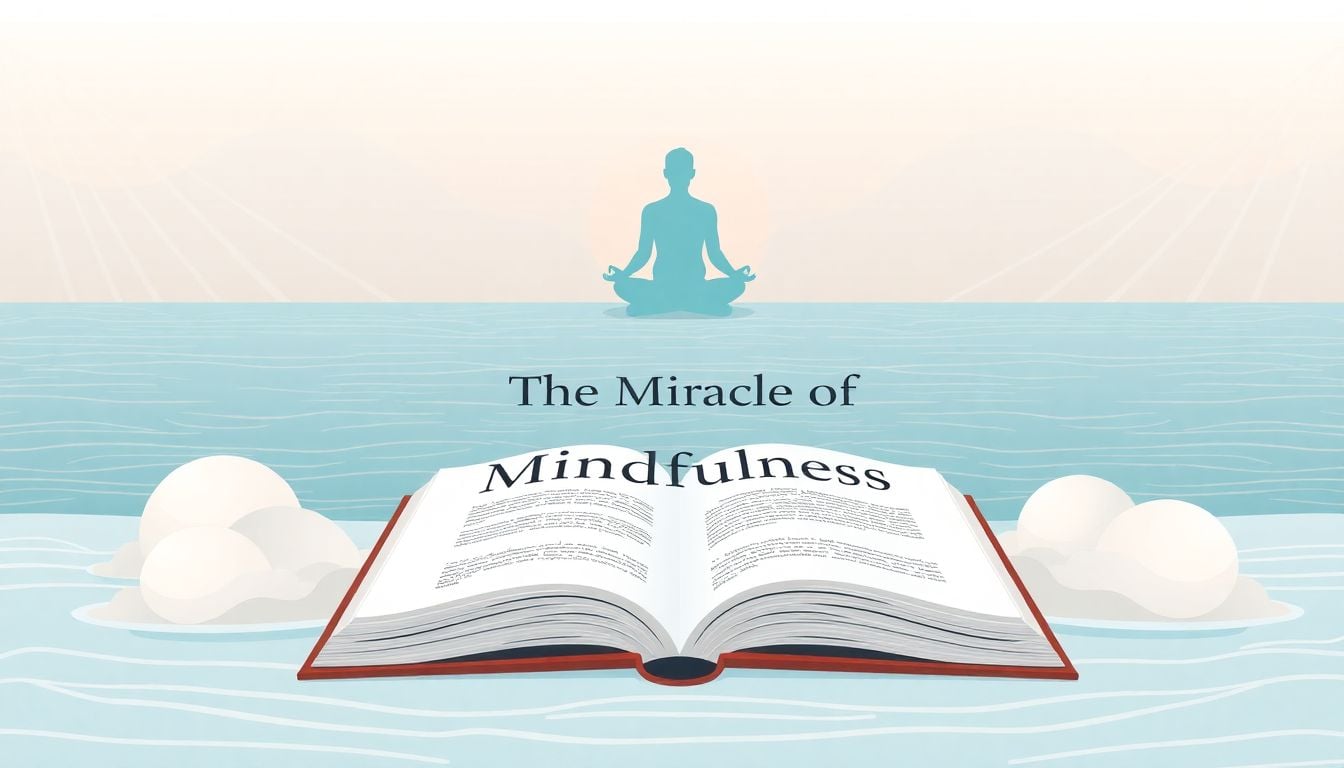Study Guides Prompt Pack
200+ prompts • $27
Creating captivating guided meditation scripts can be a real challenge, right? You might find yourself struggling with the right words or the perfect flow to help your listeners relax and focus. It can feel overwhelming, especially if you’re trying to cater to different styles or audiences.
But what if I told you that there’s a tool that can make this process not only easier but also more fun? Stick around, and I’ll share how you can leverage ChatGPT to generate soothing, engaging meditation scripts tailored just for your needs.
In this post, we’ll explore the basics of guided meditation, how ChatGPT can help, and the steps to create personalized scripts. Get ready to turn your meditation practice into something truly special!
Key Takeaways
- Using ChatGPT can simplify the process of creating engaging guided meditation scripts.
- Start by defining the purpose of your meditation—choose themes like relaxation, mindfulness, or visualization.
- Provide specific prompts to ChatGPT to generate customized scripts that suit your audience’s needs.
- Consider factors like age and experience level when tailoring your scripts for different audiences.
- Focus on clarity and sensory-rich descriptions to enhance the meditation experience.
- Avoid jargon and complex language to ensure listeners stay engaged and understand the guidance.

How to Create Guided Meditation Scripts Using ChatGPT
Creating guided meditation scripts with ChatGPT is straightforward and can be both fun and rewarding.
Start by clearly defining the purpose of your meditation—do you want it to focus on relaxation, mindfulness, or stress reduction?
Next, provide ChatGPT with specific prompts to generate scripts tailored to your needs.
For instance, you can use prompts like:
- “Generate a 10-minute guided meditation script focused on stress relief and breath awareness.”
- “Create a visualization-based meditation script that helps users imagine a peaceful beach setting.”
- “Write a meditation script for beginners that introduces mindfulness concepts and techniques.”
Experiment with different styles and tones to find what resonates best with you and your audience.
Understanding the Basics of Guided Meditation
Guided meditation is a practice where an instructor or a recording leads participants through various techniques designed to promote relaxation and mindfulness.
At its core, guided meditation often includes strategies like breath awareness, visualization, and body scans.
For beginners, it’s crucial to familiarize oneself with these foundational elements.
Breath awareness helps anchor the mind and body, making it easier to drift into a meditative state.
Visualization techniques can transport your mind to serene places, enhancing the relaxation experience.
The aim is to cultivate a mental space that fosters calmness and clarity.
If you’re crafting scripts using ChatGPT, consider prompting it with:
- “Explain the benefits of breath awareness in guided meditation.”
- “List various visualization techniques useful for guided meditation.”
- “Describe the key elements of an effective beginner’s guided meditation.”
Benefits of Using ChatGPT for Meditation Scripts
Leveraging ChatGPT for meditation script creation comes with numerous advantages.
For starters, it saves time and effort, allowing you to focus more on the creative aspect.
ChatGPT can generate diverse and unique scripts tailored to different themes or meditation styles rapidly.
This means you can explore various ideas without starting from scratch each time.
Another benefit is the ability to personalize scripts to meet the specific needs or preferences of your audience.
With simple prompts, you can fine-tune the mood, style, and length of the meditation.
Consider these prompts:
- “Provide a meditation script aimed at busy professionals seeking mental clarity.”
- “Generate a calming guided meditation for children, using simple language and imagery.”
- “Create an evening meditation script designed to foster relaxation before sleep.”
With ChatGPT, you have the power to enhance the quality of meditative experiences you offer.
Step-by-Step Process for Generating Meditation Scripts with ChatGPT
Generating meditation scripts with ChatGPT can be broken down into a few easy steps.
First, identify the specific type of meditation you want to create.
Next, formulate a detailed prompt that captures your vision.
Once you input your prompt into ChatGPT, review the generated script carefully.
Make notes on sections you would like to modify for flow, tone, or content.
Refine your script by adjusting wording or adding personal touches to enhance relatability.
For example, you might want to add sensory details or personal anecdotes to engage listeners further.
Here’s a useful prompt to get you started:
- “Guide me through creating a step-by-step meditation script focusing on self-love and acceptance.”
Finally, test your script by reading it aloud to see how it flows and resonates with your intended audience.

Types of Guided Meditations to Create with ChatGPT
There are various types of guided meditations you can create using ChatGPT, each serving unique purposes.
Some popular categories include relaxation meditations, mindfulness practices, and visualizations.
For relaxation, you might want to craft scripts that focus on releasing tension or promoting a sense of peace.
Mindfulness meditations help individuals develop awareness of their thoughts and surroundings.
Visualization guidance allows users to vividly picture serene settings, enhancing their meditation experience.
Here are some specific prompts you can use with ChatGPT to generate different types of meditation scripts:
- “Create a 15-minute relaxation guided meditation that emphasizes letting go of stress.”
- “Generate a mindfulness meditation script that encourages participants to observe their thoughts non-judgmentally.”
- “Write a guided visualization script that transports users to a tranquil forest during sunrise.”
- “Draft a loving-kindness meditation that fosters compassion toward oneself and others.”
- “Produce a gratitude meditation script focusing on appreciation for daily life.”
Customizing Your Meditation Scripts for Different Audiences
Customizing meditation scripts for various audiences is crucial for achieving the best results.
Factors like age, background, and experience level can significantly influence how a script resonates with listeners.
For instance, creating playful and imaginative scripts would suit children, while corporate professionals may appreciate brief, focused meditations.
Consider the language you use; simple concepts work well for beginners, while those with more experience can handle advanced techniques.
Here are effective prompts for ChatGPT that help tailor your scripts:
- “Write a 10-minute meditation script for children that uses storytelling and playful imagery.”
- “Generate a stress-relief meditation script for busy office workers that lasts five minutes.”
- “Create a group meditation session script suited for a diverse audience, incorporating inclusive language.”
- “Draft a calming meditation script focused on senior citizens, using gentle and reassuring language.”
- “Produce a script for a yoga class that combines movement with guided breath awareness.”
Tips for Enhancing the Quality of Your Meditation Scripts
To elevate the effectiveness of your meditation scripts, focus on clarity and vivid descriptions.
Using sensory-rich language helps your audience visualize and fully engage with the meditation experience.
Pay attention to pacing; slowing down during key parts allows listeners to absorb and process guidance better.
Incorporate pauses in your scripts to encourage reflection and deep breathing.
Here are some handy prompts to refine your scripts with ChatGPT:
- “Suggest ways to incorporate sensory details into a meditation script for deep relaxation.”
- “Generate a list of powerful affirmations that can be included in a self-love meditation.”
- “Help me create a structured script that effectively flows from beginning to end.”
- “Draft a meditation script that gradually guides users from tension to relaxation using descriptive language.”
- “List tips for maintaining a gentle and calm tone throughout a guided meditation script.”
Common Mistakes to Avoid When Using ChatGPT for Meditation
While using ChatGPT for meditation scripts can be effective, certain common mistakes can hinder your efforts.
Avoid using overly complex language or jargon that may confuse listeners, especially beginners.
Failing to maintain a coherent flow can disrupt the meditation experience.
Make sure to keep your instructions clear; every step should lead the participant seamlessly to the next.
Here are prompts to help you identify and rectify potential pitfalls:
- “Identify common errors in meditation scripts that can lead to confusion for beginners.”
- “Generate a checklist to ensure clarity and flow in a guided meditation script.”
- “Provide tips for maintaining authenticity and a personal touch in automated scripts.”
- “Suggest ways to avoid jargon and complex phrases in meditation scripts for diverse audiences.”
- “Highlight elements that could interrupt the listener’s meditative state in a scripted session.”

Additional Resources for Guided Meditation
Having access to additional resources can greatly enhance your guided meditation practice.
There are numerous books available that delve into the art of meditation and mindfulness.
Consider exploring titles like “The Miracle of Mindfulness” by Thich Nhat Hanh or “Wherever You Go, There You Are” by Jon Kabat-Zinn.
Online courses are another great way to deepen your understanding and expertise in guided meditation.
Platforms like Udemy and Coursera offer a variety of meditation courses tailored to different levels and interests.
Podcasts are also a fantastic resource, providing insights and guided sessions from experienced practitioners.
Apps like Headspace and Calm offer a plethora of guided meditations to suit various needs, from stress relief to sleep aid.
Here are some prompts you can use with ChatGPT to learn more:
- “List the best books on guided meditation and mindfulness for beginners.”
- “Recommend online courses for deepening guided meditation skills.”
- “Compile a list of top meditation apps with user reviews and features.”
- “Suggest popular podcasts that focus on meditation and mindfulness.”
- “Create a resource list of websites that offer guided meditation scripts and tips.”
With these resources, you’ll be well-equipped to enhance your guided meditation practices and create impactful experiences for your audience.
FAQs
Guided meditation involves following an instructor or a recording that leads you through a meditation session, helping focus the mind and cultivate relaxation through various techniques.
ChatGPT can generate unique and tailored meditation scripts by providing prompts, themes, and specific content, enhancing the creativity and efficiency of the script-writing process.
You can create various types of guided meditations, including mindfulness, stress relief, sleep, body scan, and visualization, tailored to different audiences and their specific needs.
Common mistakes include lacking personalization, overloading content with jargon, and providing generic themes. Aim for relatability, clarity, and emotional resonance to enhance the meditation experience.
Last updated: March 31, 2025
